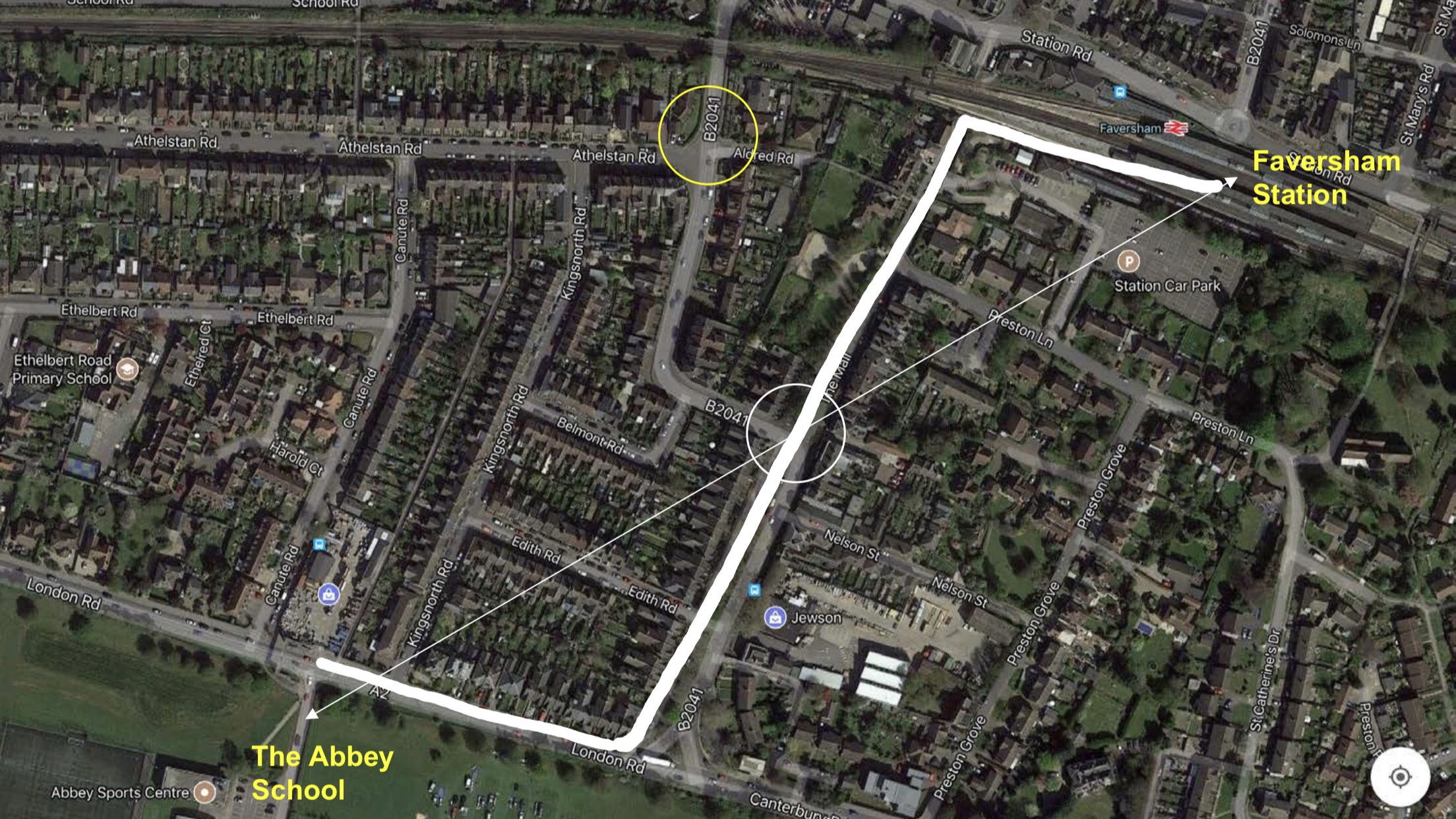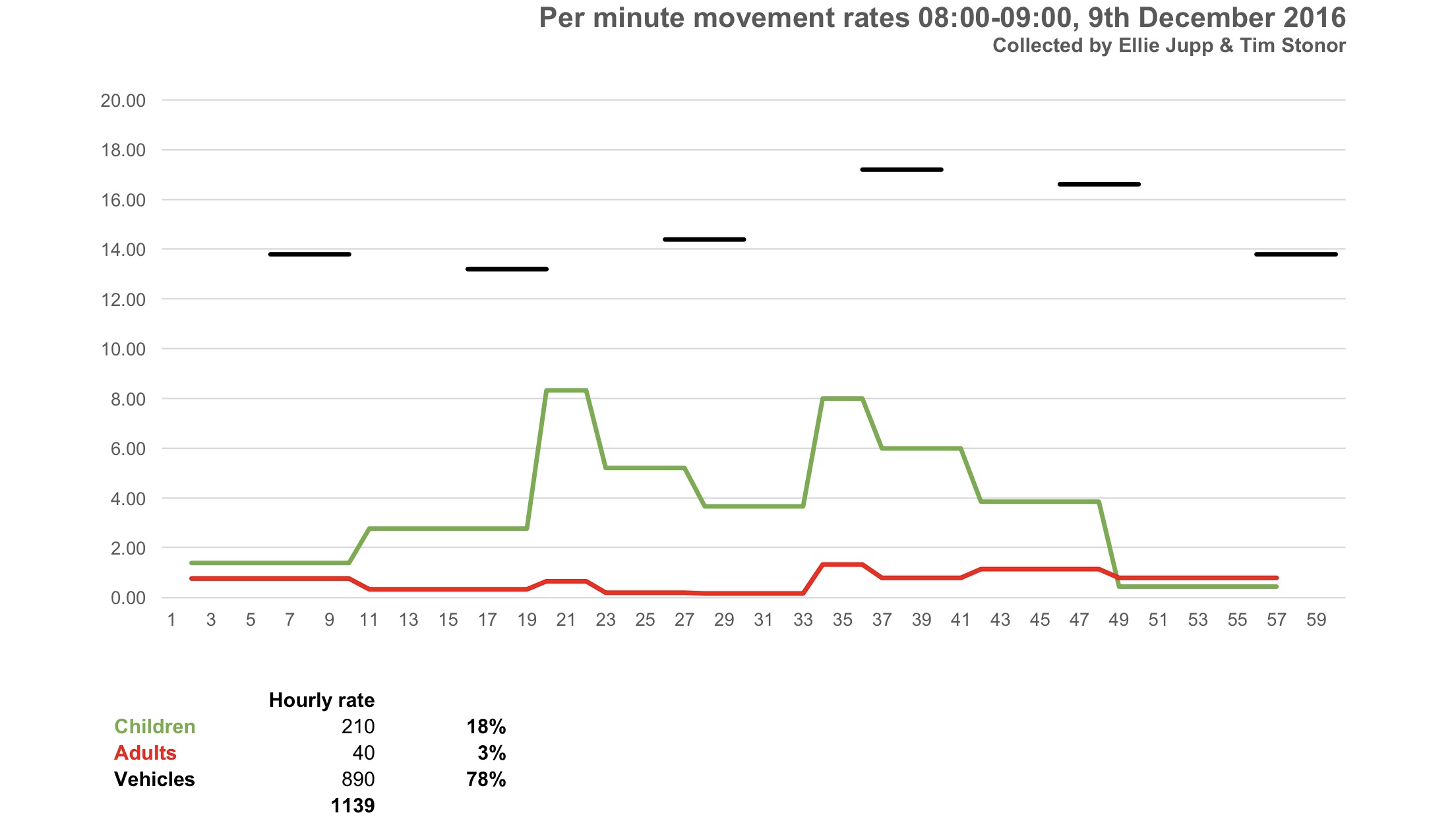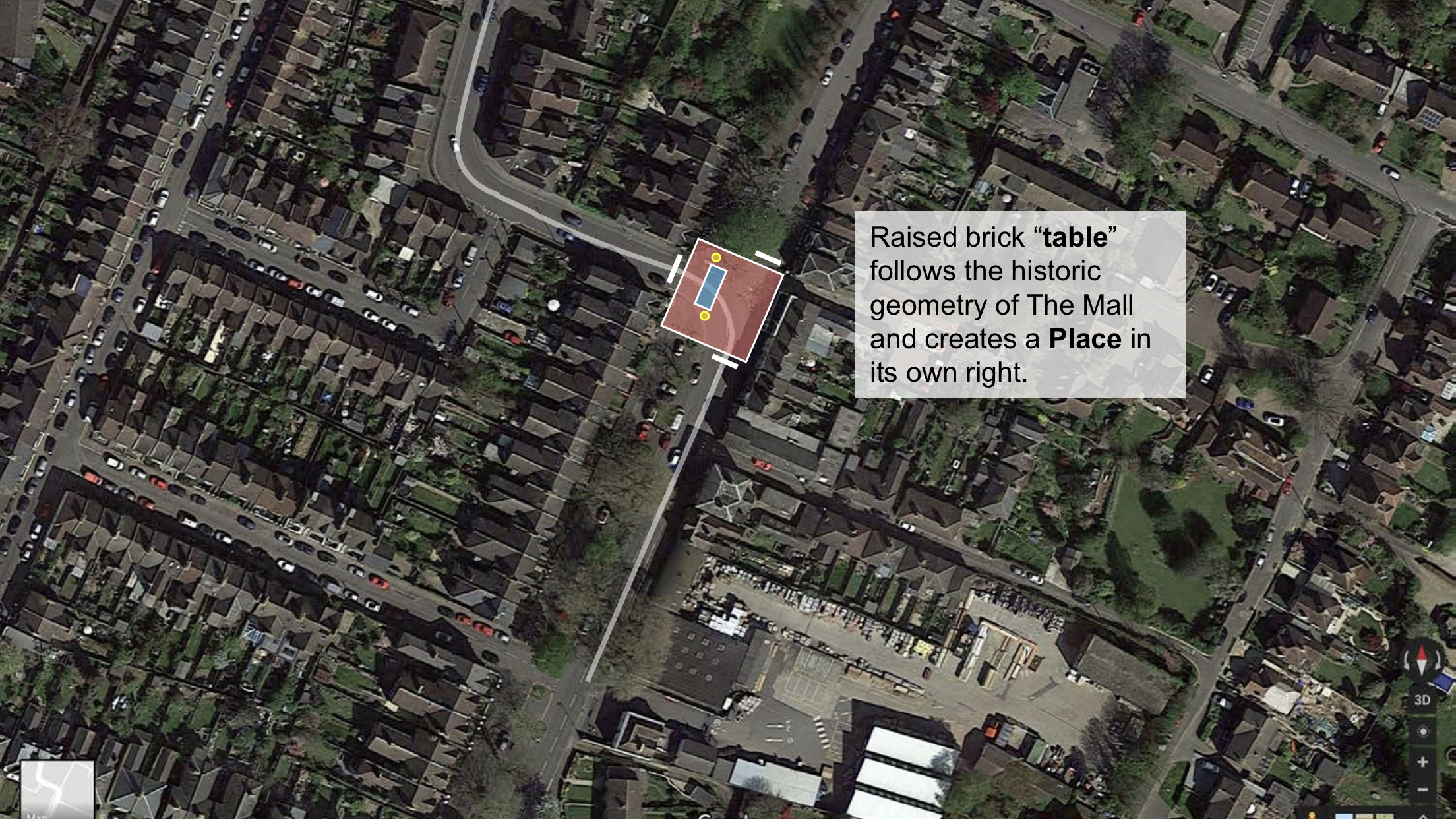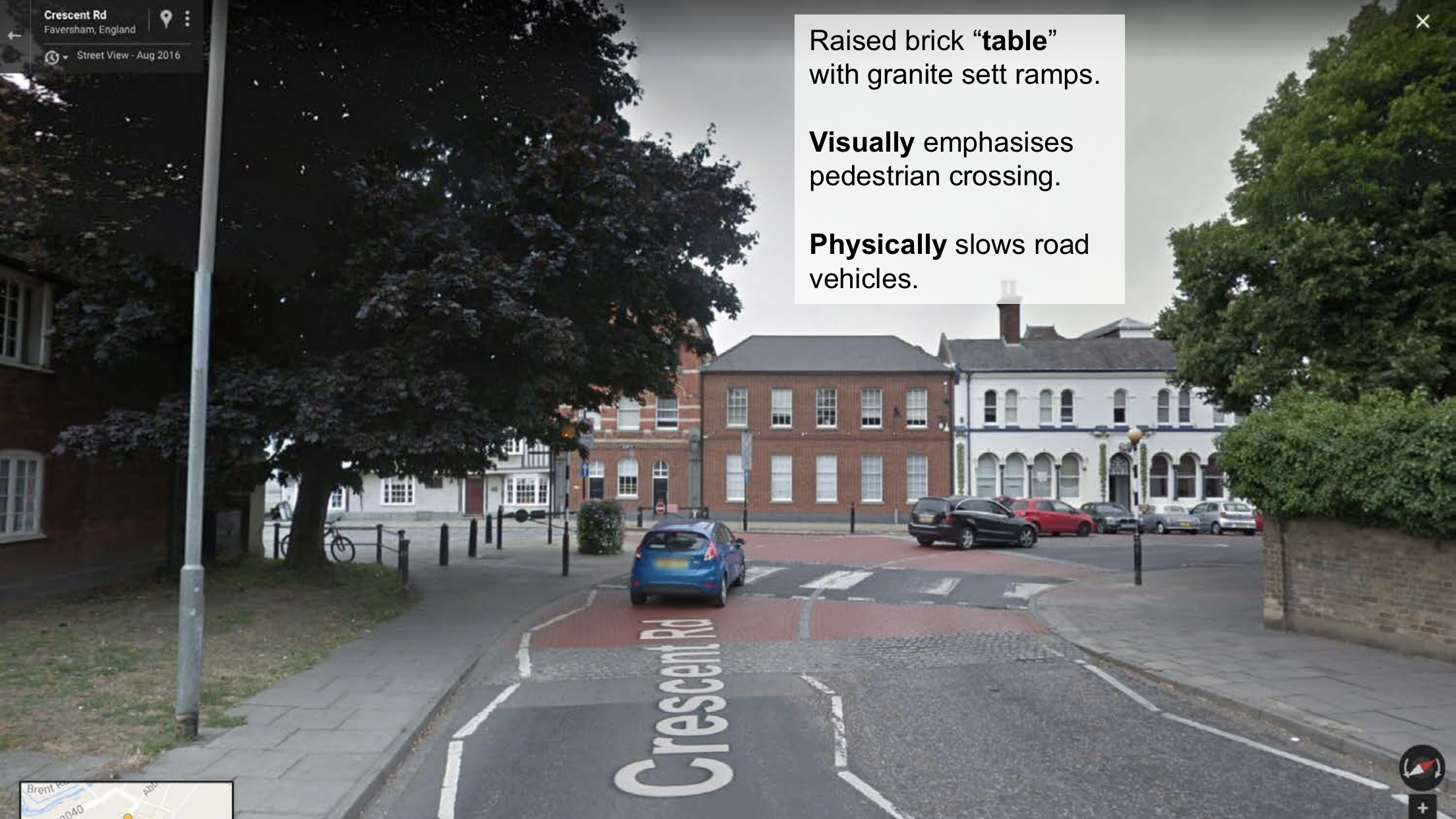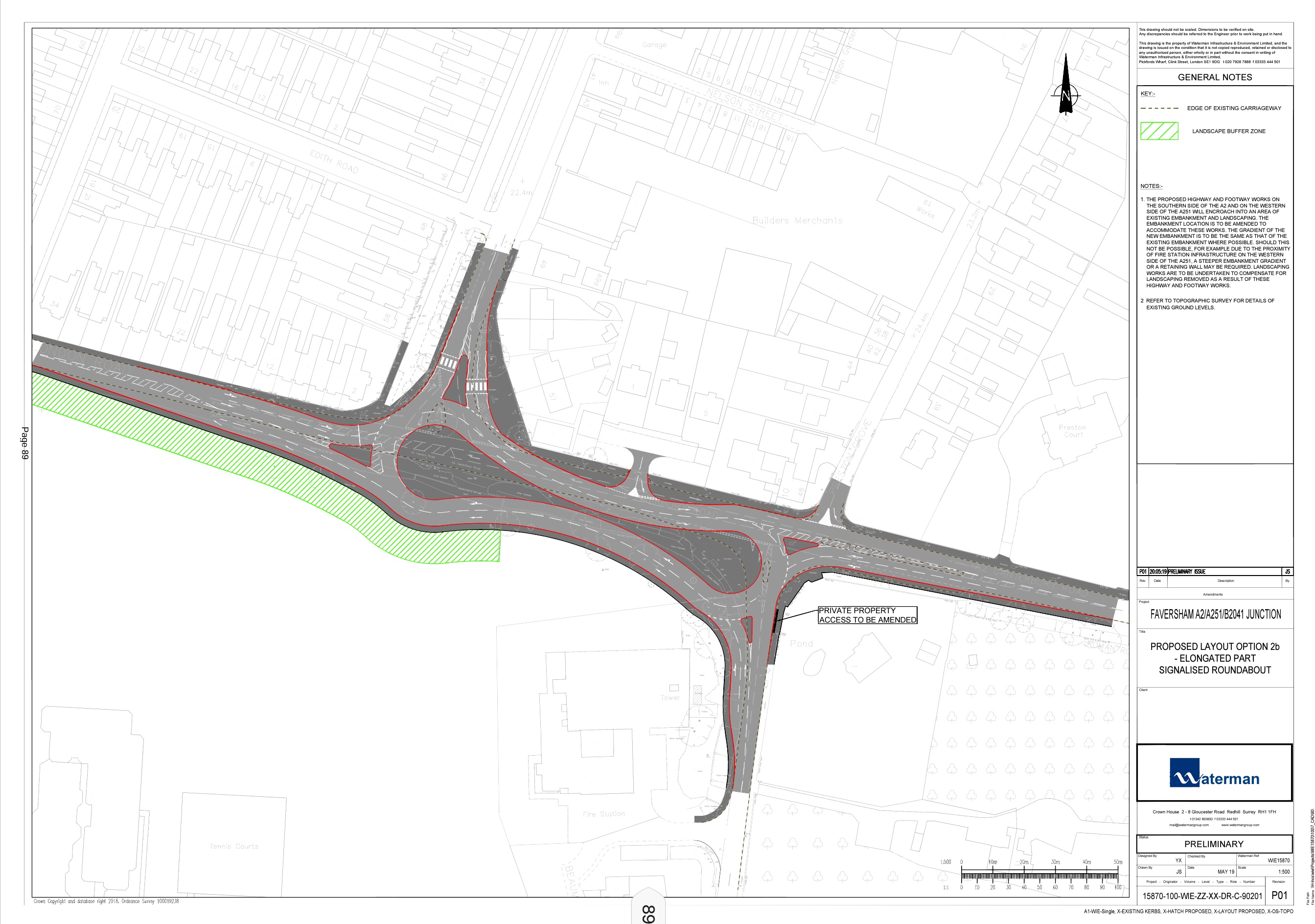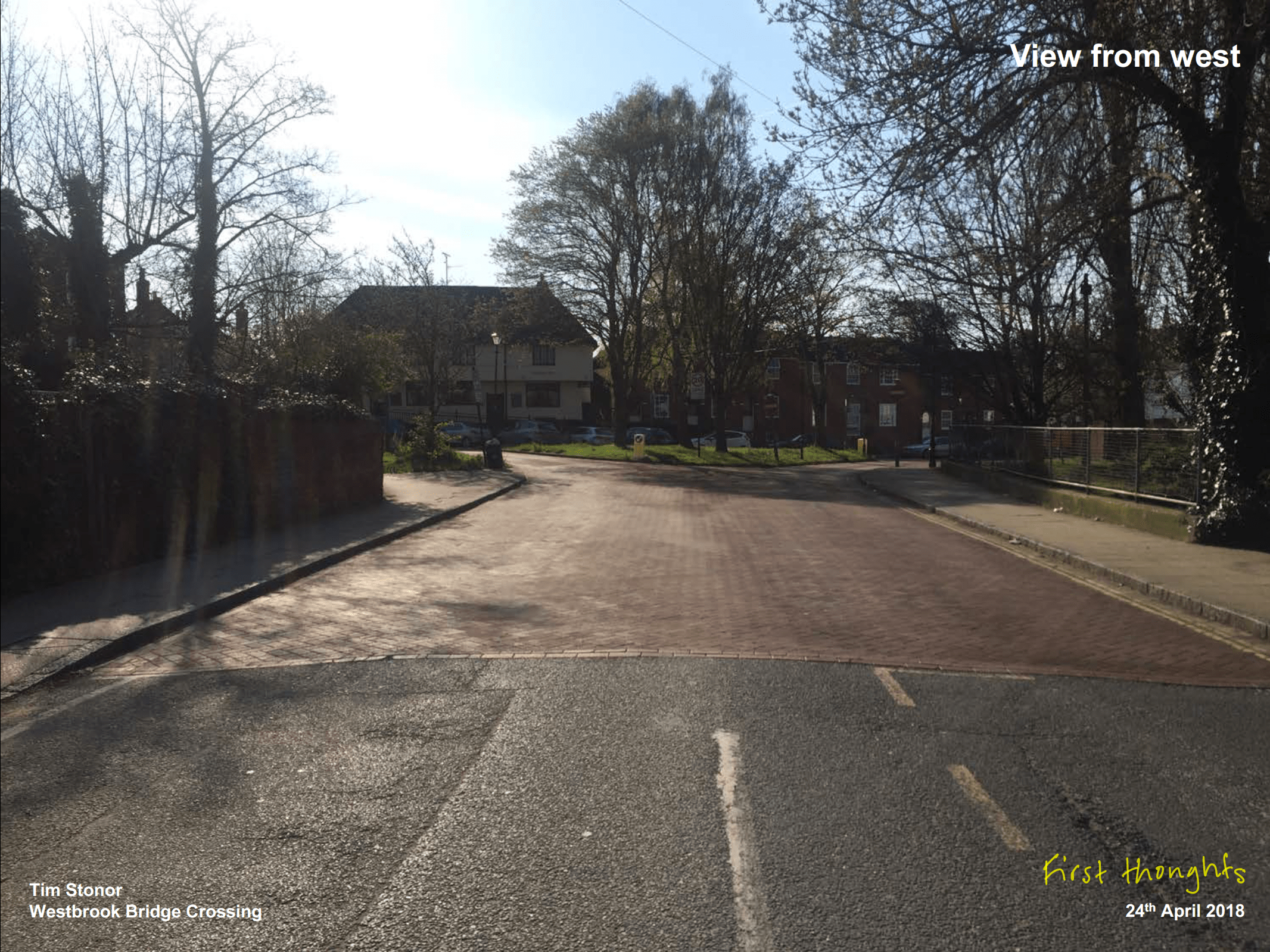While the latest proposal for a signalised crossing at the junction of the A2 and A251 – the Canterbury Road and Ashford Road – is an improvement on the previous roundabout options, it falls far short of what a good crossing design should be, especially when walking and cycling are being enthusiastically promoted by the government, KCC, Swale and the Town Council.
As I pointed out last year, this is a car-centric proposal, with few facilities for pedestrians and none for cyclists. It needs a series of fundamental design enhancements, including:
– infrastructure for cycling, which might include cycle lanes, advanced stop lines (ASLs) and/or an active travel ‘scramble’ phase when pedestrians and cycles can move through the junction and vehicles can’t
– pedestrian crossings on all arms, not just one
– a 20mph speed limit through the junction to protect pedestrians and cyclists
– a landscaping strategy to make sure the junction design blends into the natural landscape of Faversham
– a public art strategy at this important gateway into the town
– more footway capacity, not more junction capacity for queuing cars
– an overall layout (junction design geometry) that creates a sense of place, one that says “Welcome to Faversham, where pedestrians, cyclists, heritage and culture matter” eg stop lines and crossings at 90 degrees to each other
– a lighting strategy and, generally, a ‘pole strategy’ to minimise vertical poles so that lighting and signalling are integrated
– no white hatching, because hatching is a sign of left over space with nothing else to fill it. Use this space instead for planting and/or public art.
We need to see signal sequencing diagrams to understand how KCC intends to operate the junction. Then we can see how pedestrian and cycle phases can be built into this.
A strategy for Watling Street
We also need to see (or create) a design strategy for the length of Watling Street, from the Western Link to Brenley Corner. How does the Canterbury Road/Ashford Road junction integrate with the junction of the London Road/Canterbury Road and The Mall? How could these signals phase with a crossing at the Abbey School? And so on.
Next steps
I suggest that a workshop is held between eg KCC, Phil Jones, Andrew Cameron (two of the UK’s leading Transport designers and both currently working in Faversham), myself and other public realm designers with experience in creating high-quality active transport design proposals. If there is a coalition of the willing then I think there is the makings of a fine alternative.
After all, the design of Watling Street is probably the most important project to influence the next half century of Faversham’s development.



